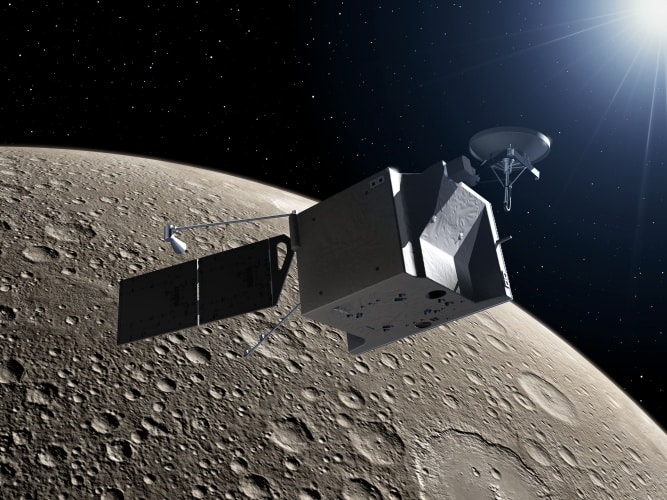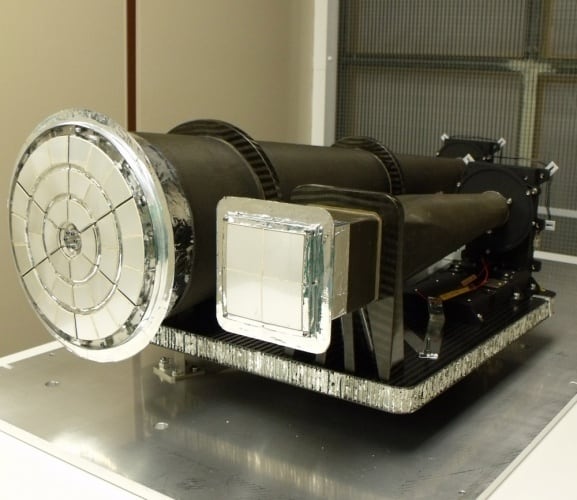A UK-built instrument that will help astronomers discover the composition of the surface of the planet Mercury has been shipped from its developers at the University of Leicester to Airbus Space & Defence in Stevenage for integration into the spacecraft that will carry it into a low orbit around the closest planet to the Sun. The Mercury Imaging X-ray Spectrometer (MIXS) will fly on ESA’s Mercury probe, BepiColombo, in 2017.

Only the third craft to visit Mercury, BepiColombo is hoped to add to the knowledge gained by NASA’s probe, Messenger, which ended its ten-year mission (with four years in Mercury orbit) at the end of last month, when it used the last of its fuel to crash into the planet. Mercury unexpectedly discovered ice on the planet’s surface, in craters sheltered from the sun, and found evidence of volcanic activity, as well as producing data that allowed the most detailed maps of Mercury to date to be drawn up.
BepiColombo is a dual mission, which will carry two probes to Mercury. The ESA probe, which is largely being built in Stevenage, is the Mercury Planetary Orbiter (MPO); the other probe, from the Japaese space agency JAXA, is the Mercury Magnetosphere Orbiter (MMO).
MPO will carry 11 instruments from all over Europe, which will study Mercury’s physical make-up, including geology, interior structure, composition and surface features, as well as its unstable and tenuous atmosphere. Operating in intense sunlight and temperatures up to 350°C, MIXS will use new optics to study X-rays from the planet’s surface, which are generated by fluorescence as more intense X-rays from the Sun bombard the planet. These X-ray signals are hoped to reveal characteristic fluorescence from elements in the surface of the planet; this may also yield clues about how the planet formed.
“The team have worked incredibly hard over many years and in particular throughout the last year, to design and build such a complex instrument,’ said principal investigator Emma Bunce, Professor of Planetary Plasma Physics at Leicester. “It has been a very challenging project from a technical point of view, as the instrument needs to survive extreme temperatures at the orbit of Mercury, perilously close to the Sun.”

“NASA’s MESSENGER mission showed us that Mercury is a misfit planet,” commented MIXS lead co-investigator David Rothery, Professor of Planetary Geosciences at the Open University. “There’s so much about it that we didn’t expect and that we don’t understand. MIXS is one of the instruments for BepiColombo that will help us sort things out. “
BepiColombo is a mission that is trailblazing several new UK technologies. The Mercury Transfer Module that will carry both orbiters to the planet will be propelled by an solar-electric propulsion ‘ion drive’ developed by Qinetiq; this will actually slow the craft down against the pull of the Sun’s enormous gravity as it nears mercury, so that it can enter orbit instead of overshooting and falling into the Sun. This will be ESA’s first use of this technology outside the Earth-moon system. Three other instruments on the MPO also have UK technical input.
“The UK’s considerable skill in new technology development is not only allowing us to explore our solar system but is securing valuable contracts for UK industry whilst often creating products that can also be applied to other industries,” said David Parker, chief executive of the UK Space Agency.




Glasgow trial explores AR cues for autonomous road safety
They've ploughed into a few vulnerable road users in the past. Making that less likely will make it spectacularly easy to stop the traffic for...